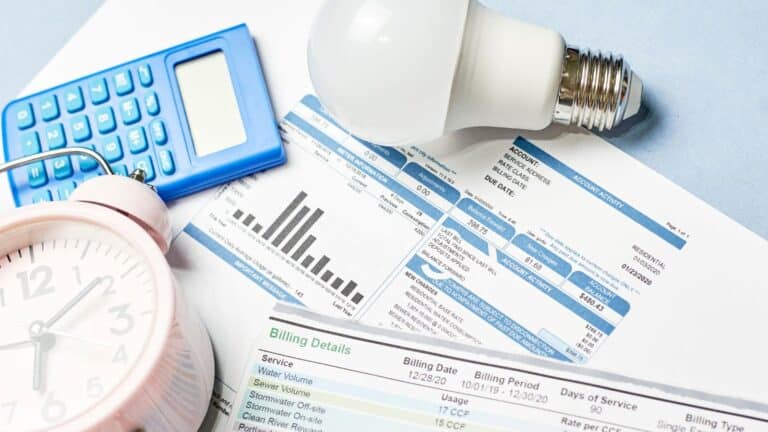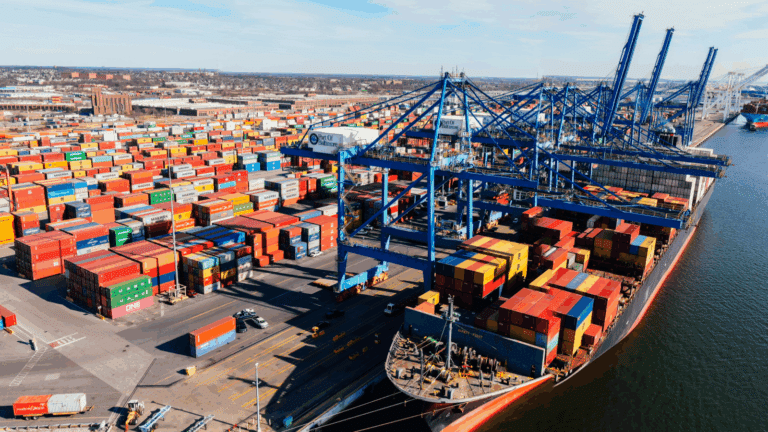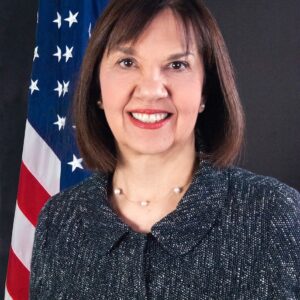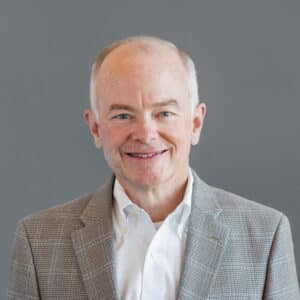This website uses cookies as well as similar tools and technologies to understand visitors’ experiences. By continuing to use this website, you consent to Columbia University’s usage of cookies and similar technologies, in accordance with the Columbia University Website Cookie Notice.
-
Transcript
-
Cheryl LaFleur: We thought we overbuilt nuclear in the 1970s. Now, we’re paying to extend the life of some of those units now because they’re so valuable and carbon-free, even though we thought they were so expensive and overbuilt 50 years ago. So of all the things I worry about, having too much electric infrastructure is not one of them. I worry far more about having too little.
Jason Bordoff: The world is on the brink of a new age of electricity. That’s the headline from this year’s World Energy Outlook released by the International Energy Agency. In the United States, electrification is set to transform the energy landscape. According to various projections, the nation is expected to see a rapid rise in power demand. There are open questions about how this demand will be met and if this means increasing carbon emissions from the power sector, these questions are further complicated by the rise of artificial intelligence and by an antiquated and fragmented electric grid. So what is the state of America’s grid? How do efforts to decarbonize the central power system impact reliability and the cost of electricity? And what does this new era of rising electricity demand mean for domestic manufacturing, AI data centers and other industries?
This is Columbia Energy Exchange, a weekly podcast from the Center on Global Energy Policy at Columbia University. I’m Jason Bordoff. Today on the show, Cheryl LaFleur and David Hill. Cheryl is an advisory board member here at the Center on Global Energy Policy. Since 2019, she has served on the board of directors of New England’s ISO, the Independent System Operator. Previously, Cheryl is one of the longest serving commissioners at the Federal Energy Regulatory Commission and twice served as FERC’s chair. Earlier in her career, Cheryl served as executive vice president and acting CEO of National Grid USA. David Hill is a nonresident fellow here at the Center on Global Energy Policy. From 2012 to 2018, he served as executive vice president and general counsel of NRG and he also served as general counsel of the US Department of Energy during the administration of President George W. Bush.
Cheryl and David joined me to discuss a recent article David and I authored in foreign policy called The Key to a Successful Trump Energy Agenda is Electricity. And we talked about the incoming Trump administration, its impact on FERC and the status of permitting reform measures. We also discussed the role of natural gas in meeting growing power demand and the climate impacts of this choice. I hope you enjoy our conversation. David Hill, Cheryl LaFleur, thank you so much for being with us on Columbia Energy Exchange. Great to have you both so deeply involved with our work here at the Center on Global Energy Policy in so many ways and really excited to talk with you this morning. Thanks for making time.
Cheryl LaFleur: Thanks for having us.
David Hill: Great to be here.
Jason Bordoff: So what I want to do, and the reason I was so excited to have you both on is everyone’s talking about electricity again, I’ve been working in energy for a while and that’s sometimes OPEC and what’s happening with oil prices and then Russian gas to Europe and God forbid there’s a nuclear disaster somewhere in the world like Japan with Fukushima. I don’t know, electricity was sort of boring and sleepy and it’s full of acronyms like PURPA and FERC and PUCs in Order 888 and things that nobody understands. So I want you to help all of us understand how we should think about what’s happening in the electricity sector, particularly in the US but we may talk globally as well.
So first, just to level set for everyone, I think broadly people have a sense of the story and why the International Energy Agency, as they put it with the headline coming out of their recent World Energy Outlook sort of said, “We’re moving from the age of oil to the age of electricity.” But Cheryl, just explain to people listening like why we’re all talking about electricity again and why the power sector is top of the energy agenda.
Cheryl LaFleur: Obviously, the electric grid is sort of the basic infrastructure that makes everything else go and we should be thinking about it all the time. But I think the reason it’s getting so much focus right now is for the first time in a long time we’re seeing a lot of growth in the use of electricity. Back in the ’80s and ’90s when I was in the industry, we used to say that organic growth was about 2% a year from just people buying new appliances and stores opening. And then for a long time, there was very little organic growth in both parts of the country because we had increasingly efficient appliances and machines to use electricity and there wasn’t a lot of economic growth in that sector. Recently, within the last six to eight months, I mean, you can’t pick up an article in the energy press without reading that electricity is going to increase by some startling percentage over the next decade, but some estimates are back to 2 to 3% a year and more in some regions of the country.
And that’s really powered by two things. The first is largely in response to the threat of climate change. We’re seeing the electrification of more end uses that used to be directly made by burning fossil fuels, particularly transportation but also home heating and water heating. We’re seeing much more pushing of electric appliances and if all of the cars go electric and the light duty trucks and then ultimately the heavy surface transportation that should consume a lot of electricity. And secondly, there’s been a lot of brouhaha about the fact that data centers, particularly those that engage in artificial intelligence, take a tremendous amount of electricity. So far, they’re centered around a few places in the country. Texas has a lot, Northern Virginia, but I think we’ll be seeing more of them in a lot of places and that’s driving a lot of the electric load forecasts. So we’re going to need more electricity in the future than we use now.
Jason Bordoff: David, you and I co-authored a piece recently in foreign policy. The headline was The Key to a Successful Trump Energy Agenda is Electricity. And what motivated that piece was the president-elect’s promises to bring energy prices down. And I think the sense you and I had that if one is worried about energy prices, there’s probably right now more reason to be worried about electricity prices than there is oil prices. Just talk a little bit about the concern that in writing this with me, we were trying to dry out for people.
David Hill: Yeah, no, good to see Jason, both you and Cheryl here this morning. I think in the piece, there’s always so much talk when it comes to energy topics in general about the oil and gas and that’s where you see the drill, baby, drill and comments like that. And obviously, everybody who is filling their car up with gas, I mean, they see that at the pump and they see if it goes up a nickel a gallon or whatever. I mean, they notice that. I think when it comes to the electric power sector, as Cheryl was saying, we’re seeing things that are happening there that are leading to significant increases in demand. And it’s not as if that just started. We’ve had more things that have been going on in the economy that have been more relied on electricity.
We’ve got electric vehicles, we’ve got more home heating that is relying on electric power as opposed to natural gas or heating oil as in the past. And so we’ve got more things that are using electricity that used to use something else and we’ve got all these new demands like what Cheryl was talking about with AI and so forth, but the ability to sort of turn on new electric power supplies, it can’t happen at least at large scale, just overnight. It takes a long time to build new facilities, to build new transmission lines. And so it’s something that you can’t just decide this week you’re going to have it, and next week, you’ve got it. And I think that when you and I were writing this piece for foreign policy, there is so much commentary on the oil and gas sector.
And yet, when it comes to what consumers and what we think what consumers are going to be feeling in terms of near-term impacts on prices and costs, really more of the focus ought to be and increasingly is on power. The thing is also when it comes to the power sector, we’ve got not only the fact that we’ve got to worry about the cost, we also have to always worry about reliability. Americans take for granted our reliable electric power system, but a lot of things have to happen right every second in order for reliability to be maintained. And so ensuring that we have the right set of resources in the right place always available is a continuing and now increasingly difficult challenge with some of the new loads coming on the system like what Cheryl was talking about.
Jason Bordoff: So let me ask about each of those costs and reliability. And you’re both involved with two of the most important system operators in New York and New England and you sort of see grid operators and regulators seeming to be ringing the warning bell about the state of the grid, about where we are right now with reliability given rising demand, given large amounts of new intermittent energy being put onto the grid, solar and wind, given challenges with building infrastructure that may bring gas into the grid if that’s needed for reliability. How is the state of the grid today, Cheryl?
Cheryl LaFleur: Well, I think the state of the grid is very strong. I kind of reject the trope you sometimes see in the press that oh, the grid is so dilapidated. It’s I think a former Secretary of Energy called it a third world grid. We have a really amazing machine here, but there’s no question that that machine was built for the past and the present and not built for where we’re going in the future. If you look at a transmission map of any region of the country without any place names, just look at the wires, you can see the ghosts of former coal plants and former nuclear plants by where the big substations are and where the lines end. So the grid of the present was built for the resources of yesterday. And if we’re going to rely on different resources in the future and we’re going to use more of the electricity, we need a new grid.
And as David said, it takes a long time to plan transmission lines, figure out where we’re going to put them, get all the approvals from the multiple levels of government and then build them and then they have to hook up to something. We are seeing a lot more distributed power and rooftop solar, potentially fleets of car batteries being used to help shave and level out demand from big renewables. But we still need transmission lines in central station generation and that takes a long time to build. So the state of the grid I think is good now, but we’re seeing some of the markets, we recently saw it in the PJM capacity auction send a signal that more is needed. I mean, PJM has had a ton of data center development, and the way markets work is when you need something, the price goes up, and that set a very strong price signal in PJM and a lot of people have been talking about that.
Jason Bordoff: You’re talking about the auction for so-called reserve capacity PJM’s, the Mid-Atlantic region and some areas around it and how much they were willing to pay to have capacity on standby for those.
Cheryl LaFleur: Well, we don’t usually call it reserve, that’s a different product, but it’s just capacity is like an insurance policy to have resources in the future. In the case of PJM, I believe they normally bid three years out. Some of their auctions have been a little closer that time than that because it delays. And so it’s saying what we’re going to need powering three years, how much is it going to cost us? And they got a pretty high price signal in some parts of their system and that was like a warning signal to a lot of people. Hey, if you don’t have enough power, it costs a lot. So we have to make sure we have enough.
Jason Bordoff: And those challenges to reliability are coming from where? Is it the large amounts of intermittent renewables that are being added to the grid? Is it just inability to build transmission?
Cheryl LaFleur: The renewables are not causing a reliability problem per se. They can be highly reliable, but they operate as they operate. They’re intrinsically variable and you need balancing resources to balance them out. Right now, mostly natural gas, in the future, we might have long duration storage, we’re using some demand resources, people turning things on and off to balance them out. So you need to run a more complicated system and we have to make sure we have the balancing resources. We pay them to stay online, we have the fuel for them, but reliability threats are also coming in some parts of the country from extreme weather, which I’m not a climatologist, but seems like another aspect of climate change. We’re seeing more wildfires both in California, but we saw them in Canada and other places and that’s causing reliability issues on the grid. So we need transmission to hook to other regions.
Jason Bordoff: David, you’re involved with the New York ISO. Do you share that assessment of where we are with reliability?
David Hill: I’d commend to everybody the reliability needs assessment that the New York Independent System Operator has put out and which goes through a lot of addresses in great detail and really comprehensively evaluating the reliability needs and looking forward in the state of New York and what might be needed when and what both demand and supply look like really years into the future. The thing is about when it comes to the reliability needs, and if you look at that RNA as we call it, there are various things that come into play. One is the various resources, the supply resources, where they’re going to be, what they’re going to be depending on what kind they are and where they are that goes into what it is you need to ensure is on the system at other places.
At other times, if you’ve got your intermittent resources, with solar and wind for example, you have to figure out how you’re going to make sure that those are offering supply in the right places and the balance than that you’re maintaining voltage and that you’re able to supply even when you don’t expect those resources to be operating because obviously the wind doesn’t blow all the time. Sun doesn’t shine all the time. I think, too, one of the things that you see in that RNA is an emphasis on the fact that we’re talking about increased amounts of uncertainty in the future. One of the things that we have, and it’s really kind of uncertainty of all kinds. You might have weather or climate uncertainty.
You’ve definitely got a lot of uncertainty about what demands are going to happen. If you look just in the last couple of years, these dramatic increases in a forecast about demand primarily because of the data centers and AI and so forth. Well, nobody really knows. I mean, one of my former colleagues at the US Department of Energy in Washington, when anybody was talking with great certainty about what was going to happen in the future, he would lean back in his chair and he would say, “Well, you know what? There are no facts about the future.” And I like that because of course things can actually turn out in ways that nobody really expects. And so we’re now entering a period where we’ve got an economy that is increasingly reliant on power.
Consumers feel the costs when the costs increase obviously, and they feel it all the way up and down the socioeconomic ladder, if you will. And obviously, low and middle income consumers feel the price increases most [inaudible 00:16:49]. And yet, we’ve got these massive new loads that may come on the system because of AI and the data centers and so forth. But everybody’s estimating that, nobody really knows for sure what’s going to happen. So we’ve got a lot of uncertainty looking out years into the future.
Jason Bordoff: And it seems to me like the way the industry, utility sector, tech companies are approaching that uncertainty is to overbuild. I mean, the cost of under building and falling short on data center capacity could be existential for so-called hyperscalers. The cost of investing too much in power generation and data centers maybe is not nearly as large as the cost of under investing. And that’s just the nature of these booms. I mean, we saw it in the shale revolution, right, where it was a transformational thing for the country, but there’s a lot of money wasted because people didn’t know where things were going to go and private equity rushed in and small operators made a bunch of bets. And now, we’re seeing consolidation and we’re seeing rationalization and maybe this follows a similar pattern. So what does that mean for just the rush now to build new forms of power generation and put a lot of capital into electricity, some on the grid, some behind the meter. Maybe that’s an opportunity to make the kind of investment Cheryl was talking about we need for reliability moving forward or are there risks as well.
David Hill: We might turn out to be right and we might turn out to be wrong about some of these things. Well, actually, we know we’re going to be wrong, we just don’t know how much we’re going to be wrong in which way, and really one of the questions that gets presented is, okay, well, who bears the risk for that? I think the thing is about we have and the operators of the system, a system operator in running the system actually has to manage uncertainty every single day in terms of what plans are dispatched and managing different things in terms of just the operation of the grid moment-to-moment. But you look out into the future, we have been to this movie before.
I mean, there have been times in the past in the power sector when facilities and generating facilities, while other facilities were dramatically overbuilt when the wrong technology was picked, when the wrong guess was made about where the price curve was going to go or the technology curve was going to be or anything else. And so the question is, okay, well, so who bears the risk of being wrong? I think you can choose to always overbuild, I mean, to some extent, but that comes at a high price depending on how wrong you are. And so we want to hope to get the optimal set of resources as much as we can, but also, make sure that the risks of being wrong about it are equitably allocated.
Jason Bordoff: And this comes to the question, Cheryl, of the cost. We talked about reliability and the question of the cost of this and who pays and is it ratepayers that are bearing the cost of putting new power on the grid for a small number of massively wealthy tech companies building some new technology?
Cheryl LaFleur: I want to say something about what David just talked about before that. I mean, one of the biggest elements of uncertainty is we don’t know how long it’s going to take to implement all the changes that are happening everywhere before you even get to the data centers. We have 32 states the last time I counted in some kind of climate remediation pattern trying to build in the East Coast huge offshore wind facilities that are an enormous resource right near the population centers in the east trying to electrify loads. And some of those things are happening more slowly than we wanted, but we don’t know whether we will get the low growth from electrification faster than we get the new resources on or whether the new resources will be there every time. I really don’t lose a lot of sleep of having too much on the system or too many resources, because that’s not usually a problem.
We thought we overbuilt nuclear in the 1970s. Now, we’re paying to extend the life of some of those units now because they’re so valuable and carbon-free, even though we thought they were so expensive and overbuilt 50 years ago. So of all the things I worry about, having too much electric infrastructure is not one of them. I worry far more about having too little. As far as the data centers, so here we have basically everything on the system in some way, shape or form is paid for by electric consumers. It’s allocated in different ways. In the 50 state houses, it’s allocated in different ways by FERC, but in some way, shape or form, you either pay it at your power prices even though they’re set by the market, then they’re people who set them try to recover it and recover their costs or you pay it in your local electric bill, the cost of the wires that go to your house.
So if data centers are allowed to just plop down on the system, they might take a lot of the power and also take a lot of the carbon-free resources that the states are coming on to make their goals. But in some cases, the data centers are either like the recent Exxon announcement, I believe it was Exxon, right? That’s building power plants islanded off the grid with their own backup supply or they’re attached directly to a power plant and trying to put protective devices in place so they have less impact on the system. So that’s something that the state regulators at FERC have to wrestle with. How do we make sure the customers overall are fairly treated and that they appropriately get the reliability they need while also recognizing this is a big new economic driver of the data centers? But ultimately, customers pay for everything that’s on the system, but when it’s off the system and directly to a data center, that’s different.
Jason Bordoff: And so just say more about that. I mean, I had written another piece where I just talked about one of the principles of meeting the increase in power generation capacity for this data center, AI surge, sort of hold existing consumers harmless. I mean, there’s a potential economic concern, there’s certainly a potential political backlash if these massive companies like Amazon, Google Meta, Microsoft, which are making enormous amounts of money off this AI revolution, if businesses and consumers are seeing their power bills go up in order to bring new power generation on the grid. This works differently, I think in regulated versus deregulated markets.
But talk a little bit about how you think, are there reforms that are needed to think about how we’re going to bring this new capacity on the grid if it’s the tech companies themselves, if it’s utilities or other actors, and how do we bear the cost of that and what does that mean? Cheryl, we talked in the beginning about the piece David and I wrote that one should be concerned potentially about power prices going up significantly in the next several years. Is that a risk? And how do we think about who bears the cost of this build out that’s needed?
Cheryl LaFleur: There’s a lot to unpack in that question. I mean, how are prices going up is a risk if we don’t build enough infrastructure in time for the demand that we have on the system. Before you even get to the data centers, prices go up if there’s not enough supply to meet demand. And so we need to make sure we’re building out the transmission grid, which is something really all sides of the political spectrum should agree on. And we’re building what we need to serve the loads of the future. As far as the data centers, I try not to flap my mouth about things I haven’t done a careful study of, but it seems that there’s a lot that has to be decided about the co-located data centers that put themselves down next to a power plant and how you allocate the cost and what the reliability impacts are back on the grid if that data center goes online.
FERC, the Federal Energy Regulatory Commission had a tech session about this a couple of months ago, and then they put out an order, but because a couple of the commissioners couldn’t vote, it was a little bit of a strange order, only three of the five commissioners voted, and even those three didn’t agree. So, clearly, there’s a lot more that has to happen and they’ll look at the facts and they’ll probably come up with different rules depending on how the data center is connected and where the data center is connected. I mean, the customers are already paying in a sense, if the states give the data centers big tax breaks. And that’s something that people, the customers elect have a right to decide, but they shouldn’t pay through their electric bill. The data centers should pay their own way, in my opinion.
Jason Bordoff: And David, how should we think about the so-called on-the-grid versus behind-the-meter where this is getting built and how important is that for the way we meet this rise in power demand?
David Hill: One of the many interesting questions when we think about the data centers and these large new loads and what you were talking about and how should we think about really how they should come on the system, how the costs that they cause should be allocated, whether… I mean, really, how do we think about I guess allowing them on? Well, the thing is though, when we start walking down the path of, okay, well, who do we decide is worthy in terms of who gets to connect to the grid, who gets to actually take power? That’s a tough road to start walking down. I think there’s a lot to be said for systems where we really do approach it from a non-discrimination standpoint in terms of allowing people to access the grid, new load to access the grid. And obviously, there are rules that go along with how you can access it.
And we do have different rate schedules. There are a lot of different rate schedules and different retail jurisdictions for different customers and so forth. But I think that there are issues that have come up in different places about crypto miners, for example. Well, those are very large loads on the systems of course, and so well, I mean, when we think about the crypto miners coming on the system, because really those new loads are the same. I mean, can be large in the same sense as the data center, but actually, you can say the same about a factory, any kind of factory. And so I don’t know. There are some tough issues about costs, about cost increases, how they should be borne, but I think getting into what we think are worthy and non-worthy, or boy, I’ll tell you that’s a rock road to start walking down in terms of electric power uses.
Cheryl LaFleur: I agree with that, and I didn’t mean to suggest that FERC would be deciding, yes, this can go here and this cannot go there. That should be done at the political level and the state houses. I know some states have taken different positions on how much crypto they want in their states where FERC has the authority and in different ways the state regulators is on the money. If you want to locate it there, how much do you pay? What kind of call rights do you have? If you lose your backup, your own generator, do you get to put all those loads immediately on the system? How do you make customers? Even FERC is an economic regulator. It can decide who pays what to whom and how we have to protect customers. But I don’t see FERC saying yay or nay to when something is a worthy resource. I don’t see that.
David Hill: Jason, Cheryl was just touching on the point that you asked me there, this whole issue of co-location and where the generation is, with some of these large new loads and some of what’s been discussed is co-locating those data centers or large new loads of whatever kind in the same place where a generating facility is. So, I mean, maybe even in the case of a nuclear power facility was the case with this was recent order out of FERC, but I think in most of the cases, maybe not all of them, but the load also wants to be able to rely on the grid, on grid power if there’s an issue with that co-located generating resource. Well, okay, so if that’s going to happen, then what level of cost or cost responsibility or what is the value of being able to lean on the grid or other generating resources in that situation?
For example, here I am, I’m sitting here talking with you all this morning. I’m not actually driving on the roads, but I can actually get in my car and go drive on the roads as soon as I want to. Now, what is the value to me of that, even though I’m not driving on them right this minute? Well, the value, it’s not zero. And so it present some very difficult questions that I think have to be addressed. And I think that actually thinking about them, one of the things that is worth keeping in mind, anytime we’re talking about this, and Cheryl, you and I and Jason, we’ve all touched on this issue. I mean, the overall jurisdiction who controls what on all this is incredibly complicated. Cheryl, you were mentioning about FERC being an economic regulator, and of course, the thing is about it’s like going back to the Federal Power Act, enacted back there in the 1930s.
It’s like, well, okay, FERC has jurisdiction over the rates, terms and conditions of wholesale sales of electric energy, but the states have jurisdiction over retail sales and the states also have jurisdiction over what generating facilities get built, but not exclusively because we’ve also got these things like the Tennessee Valley Authority and the Federal Power Marketing Administrations and we’ve got all sorts. So we have this complete, and then you’ve got the environmental regulators, some federal, some state, and so we’ve got this whole hodgepodge of regulatory jurisdiction that gets sewn together and it leads to just an incredibly complex system of who decides what, and yet, consumers bear the cost of it all, as you said earlier, Cheryl, and obviously reliability has to be maintained every single second.
Cheryl LaFleur: Well, we’ve built a pretty complicated government, and that’s true not just in energy. I mean, I also on a healthcare board and the way the monies flow between the federal government and the universities and Medicare and all, we’ve made it complicated. And in the case of energy, the local authorities have some jurisdiction. The states have a lot of jurisdiction, different agencies, different parts of the federal government have jurisdiction. It’s not a system that’s built for speed of transition if you want to make a fast turn. And that’s why we’re seeing proposals at both at the state levels and at the federal levels for permitting reform to speed up the process. But I just want to say about this one more thing about this data center thing, and I don’t mean to make light of it, but I think we will figure it out. It’s the new thing.
I mean, I’m so old. I was in the industry when we were first doing the first PURPA contracts and we were just like the Public Utility Regulatory Policies Act that you had to allow small renewables to connect to your system. And the engineers were just apoplectic, how on earth can we do this? What rules are we going to make? What if they mess up the system? How are we going to write the contracts that we just thought it was the most complicated thing we’d ever done in the very first interconnection contract? So a smart person who worked for me who’s now no longer with us wrote and filed a FERC, and now we just think of that as just so ordinary. Similarly, some of the RTOs like the Southwest Power Pool and also some of the big authorities in the Northwest came together during World War II because they didn’t have any.
The aircraft factories that were putting up were so huge, no one electric company could serve them. So they thought we got to build some lines and connect this to serve these factories. And it just seemed like how these factories are the biggest thing we’re ever going to see. How are you ever going to do this? We have to do something completely unprecedented. And now, we’re just, oh yeah, I drive by it, there it is on the highway. And similarly, these crypto and AI, now we think, my God, this is so unprecedented, how are we ever going to serve it? But we will figure this out because it’s figuring out who pays, who pays what to whom to get the stuff built and protect the people. So it comes on.
Jason Bordoff: Yeah. And the other piece of that, of course, is the demand side. If you go back 25 years to how much people projected demand electricity use was going to go through the roof because of the internet revolution, and that didn’t really happen because the technology keeps getting more efficient. And if you look at what’s happening to the productivity of NVIDIA chips, for example, it’s pretty remarkable. We’ll see if that pace of improvement can continue or not. I don’t know if Musk and Ramaswamy are going to be successful or not, but that hodgepodge of complex regulatory structure you described sounds like at least there’s some ability for maybe a little bit of efficiency and streamlining.
There’s so many topics I want to come to, but let me just ask, you brought up the role of FERC, what it does, what it doesn’t do. And I’m just curious because you brought it up, Cheryl or David, maybe remind people what it means to be an independent agency and you said FERC is not political, and are you concerned at all that the incoming administration is bringing, maybe treating some agencies historically that have been independent in a more political way? I mean, they sort of expressly said in the campaign, they intend to do that, exert more White House control.
Cheryl LaFleur: Well, an independent agency, and it’s not limited to FERC, it’s the Federal Communications Commission, the SEC and so forth, traditionally, and there are Supreme Court cases on it like Humphrey’s Executor and so forth that I probably couldn’t correctly describe, but the president and the Senate asserted their authority over that agency primarily by who they chose to put on the agency and who they chose to make chair. And that’s no small amount of authority. They get to pick the people and pick the people they like, who presumably think will make sensible decisions whether they want more technocratic types or more policy-driven gurus. They get to pick the people, they get to approve the people, they get to choose the chairman, but traditionally, they don’t get to call and say, “Hey, I’d really like to see this thing approved tomorrow.” It’s supposed to be independent once the president picks and the Senate describes.
It’s not the same as a cabinet-level person who works for the president can be fired at will at any time. And I believe the independent agency model has served us well. Traditionally, they’ve been given authority over kind of technical things where you need people to figure it out. And I mean, I don’t want to speculate what the incoming administration will do, but in the last Trump administration, there were some stirrings of sending over proposals to FERC in the very beginning. But then actually, it was some of the Republicans on the hill who were most upset when FERC didn’t have a quorum because some of the things FERC did were things that people on the Republican side of the spectrum wanted and said, “Hey, we need people at FERC to approve our pipelines or whatever.” So I’m hopeful that… I choose to be hopeful that the incoming administration will see the value of the independence of the agency. We’ll see what happens.
Jason Bordoff: Part of your optimism and hopefulness both of you I think is I heard you, Cheryl, say this is not going to be quite as calamitous as people think, and we tend to figure these things out. And you mentioned earlier people respond to market signals, prices, the capacity auction, and then people make the investments that are needed in new generation capacity or in transmission. But you mentioned a few times so far permitting reform, it is widely understood to be very difficult to build that infrastructure. So can you talk a little bit, maybe Cheryl and then David about that issue, about how hard it is to build the permitting reform that is on the hill now and what we need to do to make sure we can make these investments?
Cheryl LaFleur: Well, most of the permitting reform proposals, including as I understand the Manchin-Barrasso proposal that may or may not have remaining life in lame duck have two basic thrusts. One is to simplify the process by giving more authority to one part of the system. So generally, a lot of the proposals give FERC more siting authority, similar or in some respects similar to what they have on gas pipelines to make siting transmission, particularly transmission that spans multiple states easier. And the Congress tried to do that as far back as 2003 and one of the laws and then that got messed up in the courts and then they tried to fix it again in 2021 in the Bipartisan infrastructure, the Infrastructure and Jobs Act, whatever it was called. And that hasn’t really been tested, but they’re looking at giving FERC more authority, and I think that would be sensible if you want to get things built more quickly.
The second thing they do is try to streamline or rationalize some of the overlapping, the various environmental laws, make the NEPA timelines shorter and so forth. You’d have to make a detailed study to say whether they’re doing it right. But that’s been a thrust of just about all the permitting proposals, the simplification proposals, what’s important about them, at least this one seems to have support of both sides. The people who are… The Democrats who believe climate change is a critical problem, know we need a lot more transmission to serve the resources of the future. So a lot of them were in support of the permitting bill, and for different reasons, some of the western senators and people from the red states who want more fossil fuel infrastructure built more quickly were in support of the permitting bill. So it seemed to have some legs, but now, I’m hearing it may go nowhere, and then who knows what the next Congress will do? Maybe David knows more.
Jason Bordoff: It doesn’t seem likely for this lame duck, but there is still interest in… I mean, driven by necessity I think, to figure out how we make it easier to build infrastructure. David, what do you think is… So what’s your sense of what is so hard about the way we do permitting now for grid infrastructure?
David Hill: I think there are two things to… Well, at least a couple of things to think about when we’re talking about grid infrastructure. We can think about the generating facilities and then we think about the transmission lines. And when talking about transmission, we’re really talking about higher voltage facilities. Often in the industry, we talk about transmission and distribution, and when we talk about distribution, we’re really talking about more lower voltage facilities, more kind of local areas. When we’re talking about transmission, it’s usually higher voltage facilities and sometimes going over long distances, and certainly, they’re carrying more electric energy. I think if you’re talking about transmission, linear infrastructure, infrastructure that has to go miles, tens of miles, hundreds of miles maybe. Whether you’re talking about transmission lines or highways or natural gas pipelines or whatever, those are very difficult for the reasons that you can just imagine, a 100-mile-long transmission line is great.
And yet, if it’s 99.9% built, but that 0.1% of mile 50 isn’t built, well, the whole 100 miles isn’t any good. And so you’ve got to actually get it all right and it all has to be built. And that’s very difficult when you’re talking about going over multiple properties, sometimes going over state lines, certainly going through multiple counties or municipal jurisdictions and things like that. I think that when we’re talking about Cheryl touched upon this issue of the siting authority and federal law, the current backstop siting authority, and then what might or might not get enacted in this current permitting bill, and if it doesn’t get enacted, it’d probably be taken up in the next Congress in one way or the other. The building of transmission lines is just incredibly hard.
There was law that if everybody can remember the 2003 blackout that affected a lot of states and into Canada, and there was the 2005 Energy Policy Act which was enacted after that. There was siting authority that was enacted in that piece of law, really in response to what had happened with the 2003 blackout. But that law is not really amounted to anything for various reasons, and the courts have shot it full of holes and it just hasn’t amounted to much. So I think, I don’t know. That doesn’t really answer your question, Jason, but when it comes to transmission, the multiple jurisdictions that are involved, the cost allocation issues are difficult, but at some level, decisions have to be made. And I think it’s something where you have to cut rough justice on the cost allocation and just get on with life.
You cannot allow the perfect to be the enemy of the good when it comes to cost allocation or making everybody happy. You are never going to make everybody happy all along the distance of a long distance transmission line. When it comes to the generating facilities, that’s a different issue. And one of the things that is complicated in a lot of respects, particularly if we’re talking about these multi-state, the multi-state power regions, is you have some states that are really concentrating on lowering carbon emissions. You have other states that aren’t putting that same focus on that, and it can lead to a lot of issues when you’ve got some facilities retiring and up some places that create great power needs or great pricing issues in other regions.
Cheryl LaFleur: There’s no question it’s complicated. I do want to inject a note of optimism though. We are seeing ad hoc progress in a lot of regions, the six New England states that don’t always see eye to eye on everything agreed with ISO New England and FERC approved a long-term transmission planning process that has a way for them all to do things together or for certain states to do things without other states if there’s a difference in policies or lines are being driven by particular state policy. And I think that’s a very promising development and it really took hard work in the trenches to really figure out how you’re going to do it. The Midcontinent ISO is starting on a second tranche of multi-value projects.
There’s been a lot of controversy, but they have a situation with a lot of renewable potential in the western part of their territory and a lot of customers in the eastern part of their territory, they seem to be getting on with building more lines. In your region in New York, I know that’s a one-state ISO, but it had the same transmission congestion for decades, and now, it’s built a lot of robust lines to bust through that congestion. So we’re seeing it takes actual negotiation and figure out who’s going to pay, come up with those solutions and file them. But we are seeing the necessity of building for the future, driving some compromises, and I think we’ll see more of it under the new FERC rules.
Jason Bordoff: How are we going to meet this increase in power demand? We’re seeing lots of high profile announcements of nuclear deals, and it seems to me like they’re exciting, but they’re pretty far away. There’s a lot of investment going into new natural gas generation capacity at the same time, even though there’s a backlog there from companies like GE Vernova to build the gas turbines and supply the equipment. Cheryl, what do you see as actually happening on the ground and where the electricity generation capacity is going to come from?
Cheryl LaFleur: Well, if I had one piece of advice for the new administration, which hasn’t asked me for any, it would be don’t be against things before things, like the big offshore wind plants that are under construction on the East Coast are a critical resource. If they want energy dominance, they can’t leave that behind. And similarly, we can’t close some of the things that might not be long-term keepers until we have the power to replace them. So I think we need to focus on getting things built rather than what we don’t like. And I also think we need to aggressively push the transmission negotiations to get lines built. I mean, we need new transmission both for the load growth but also for the new resources which are in a different place than some of the resources of the past. And I think we just need to focus on getting stuff done and not so much on what we don’t like. I used to say, “You can’t be against everything, you have to be for some things.”
Jason Bordoff: I thought I read recently, you would both know maybe it was PJM, which sort of seemed to put something out saying natural gas or other firm capacity could jump the interconnection queue because of concerns about grid reliability coming back to what we talked about before, is that happening or do we see gas and maybe nuclear or other things getting preference?
Cheryl LaFleur: I believe PJM has a proposal to give priority in their interconnection queue to certain types of resources that may or may not be seen as fair. It may be unjust discrimination, it might be approved. I don’t know. I think as I just said, I think we need the big renewables. We need the distributed renewables and the computer systems to deploy fleets of car batteries, and we need the balancing resources, the gas plants to fill in. I’m optimistic about small modular nuclear. I spend most of my time in New England, which I don’t think is going to be in the forefront of building it, but we’re seeing some plans start to take shape out west, so I think we need of that in order to get into the future.
Jason Bordoff: David, in our piece, we said the Trump administration should prioritize two reforms. We’ve spoken about, one, making it easier to build infrastructure, and then the second was changing how the power sector is regulated. Can you talk a little bit about what that means?
David Hill: It can mean a lot of different things, but one of the things that I think about when it comes to that and really at both the wholesale and the retail level is greater price and cost visibility and more in competitive markets. It’s interesting that competitive markets and competition have served the American economy so well in so many different areas, and yet there are parts of the power industry that have been resistant to it for various reasons. I think looking at where competition and price and cost transparency can be improved, I think is a real keystone. You think about at the retail level where retail consumers, I mean, what other product can you think of where it’s like, well, you have no idea how much you’re using.
You have no idea what you’re paying for it. You don’t really have any idea of what it is, what you’re doing today, what it’s costing, but you’ll find out next month. Would you ever show up at the airport and say, “Actually, yeah, I’ll take that plane, I’ll get on it and I’ll fly on it, and when I get there, you’ll send me a bill for whatever that costs?” Yeah, actually, probably no. I think the thing is about to me, I think if consumers and certainly large commercial consumers have a lot more visibility in their power demand, their power costs, they run their businesses to try to control and manage their power costs, but retail consumers for the most part don’t have… Individual consumers don’t have any idea about that.
I don’t think their lives shouldn’t be made so difficult that they got to try to monitor what’s going on on the wholesale power system every minute. But there are things where more could be done to make sure that consumers can actually adjust their conduct to what it is that is causing costs on the system, and also to ensure that they’re not hit with big bill surprises. So I think there are things that can be done on both the wholesale and the retail level. I mean, actually in my dream world, I’d do something to harmonize the patchwork that we have of the kind of hodgepodge of different regulatory jurisdictions and…
Cheryl LaFleur: Standard market design?
David Hill: Yes, better market design and better sort of regulatory harmonization at the wholesale and retail level and across states. But I’m not holding my breath on part of that, I guess.
Jason Bordoff: Cheryl, just, again, giving advice maybe to the next administration, when people talk about grid modernization, what does that mean to you and what do we need to be doing to achieve it?
Cheryl LaFleur: It generally means replacing aging parts of the grid with newer equipment so that it’ll be more up to date. I think some of what David described has to happen at the state level where we have a lot of potential to have time of use rates and advanced metering so that customers, particularly as more as electrified as they have an electric heat, they already have electric air conditioning in almost every place, but if they have electric heat, an electric car can get a signal, hopefully a computer signal that they don’t even have to do anything human to intervene of when to charge and when not to charge. I think we’re starting to see that happen. And so there’s a lot of modernization that has to happen at the distribution level. At the transmission level, we’re seeing a lot of investment in replacing new equipment. I think FERC has a responsibility to make sure that’s prudent and that all of the transition costs money, that we spend the money in the most sensible way. But there’s no question there’s a lot of money going into the grid, and there should be.
Jason Bordoff: Is all of this helpful for our climate goals or is it a huge challenge because we’re going to race to build gas plants, or I don’t know, even turn coal plants back on just because we need the power. And what do you actually see happening with what companies are doing now? David, I’ll start with you.
David Hill: Well, I think that we’re building new facilities and we have the opportunity to modernize the system. We should view that as a real opportunity and a positive development. Is everything going to happen in the way any of us would actually prefer? And the answer is no, but I think we are in the midst of an energy transition here in the United States and really throughout the world, and I think we should really view that as an opportunity and we should view it as something that is really a generational opportunity. And I think that there are… And yet we can actually view it just as a thing in itself. I mean, there are all these other things, and we’ve talked a lot about data centers and we’ve talked a lot about artificial intelligence and things like that. Other developments are going on that where what is happening with the power system is important, and it’s integral, but they’ve got their own set of priorities.
And so we’ve got a whole lot of things that have to get sewn together here all at the same time. I view though that they’re in the midst of this energy transition looking for something, and Jason, you and I touch upon this in the foreign policy piece, reliable, cost-effective and clean. I really do believe that’s actually what it is that we need to optimize for. That’s what it is that we can get. We absolutely can get it. It’s actually something where we just need to be conscious of all three of those at all times and make sure that what it is we’re doing, it doesn’t lose sight of any one of those while we’re trying, we’re pushing really hard to accomplish one or the other.
Jason Bordoff: And Cheryl, what does it mean that we’re seeing the playing board being reshuffled a little bit, news this week that Exxon’s building a power plant, for example, what does that mean for how we think about where the grid is headed, regulation of the grid, who the players are?
Cheryl LaFleur: Well, I want to address the climate question you asked, David, and also that, I mean, I would be drinking the Happy Juice if I said, “Oh my God, the next four years are going to be the high point of climate mitigation in the United States.” On the other hand, a lot of the climate action is being driven at the state level and it will continue. Renewables are being built, investments are being made in distributed solar and storage. Cars are being electrified, charging stations are going up all over the place. We will see climate progress continue. Even if we drop out of Paris again or whatever signature moves are made, a lot of the climate action will continue to happen. I’m quite confident of that. I think David’s right that we need to make sure we protect the reliability of the grid so that we don’t get a backlash against responding to climate change.
And we need to keep an eye on how much it’s all costing. And the cost question can be complicated when the costs are coming from many different levels, your local bill as well as your federal bill, but I mean, the federally regulated part of your bill. But I think we’re capable of doing that, and I think we have to remember the cost. You mentioned that internet costs coming down. I remember when we thought solar would never be cost-effective, and now it’s come down like 85 to 90% in cost in a decade, and I think we’ll see the cost of other clean technologies come down as well. So we have a lot of potential to get there where we need to get on climate.
Jason Bordoff: There’s so many different moving parts of this question, and we’ve touched on so many different issues, but I’m just curious as we wrap up, David and then Cheryl, is there anything of enormous significance that I haven’t asked you about? Is there a topic you want to make sure to touch on for listeners before we wrap up?
David Hill: The only thing I’ll say, Jason, is just that I think it’s an incredibly exciting and interesting time to be in the power sector, and I think it’s a great opportunity, particularly for young people to be involved in it. It’s something where I think the opportunities are outstanding and it’s a really interesting industry, and it’s not like we’re on the verge of solving everything. So I think particularly for students or young professionals, it’s a great time to be involved in the industry and encourage people to look very closely.
Jason Bordoff: Cheryl, final comment.
Cheryl LaFleur: I completely agree with that. I think it’s time to admit that the baby boomers are not going to solve all the problems of the world. And as we’re moving off the stage, there’s a lot that has to happen to make this all come together to address the climate issues, to build more resilient infrastructure as the weather gets worse, to make it happen in a reliable way and make it as affordable as we can. And I think that’s going to be a fascinating problem for quite a long time to come.
Jason Bordoff: Yeah, a lot of opportunity for all the great students we have here, but you guys will, I know be on the stage for a while to come because we need your expertise and experience, and we’re really grateful you’ve contributed here at the Center on Global Energy Policy for so many years. So thanks for being so generous to us for years now, and thanks for being generous with your time this morning, David Hill and Cheryl LaFleur.
David Hill: Thank you for having me.
Cheryl LaFleur: Thank you.
Jason Bordoff: Thank you again, Cheryl and David. And thank you for listening to this week’s episode of Columbia Energy Exchange. The show is brought to you by the Center on Global Energy Policy at Columbia University School of International and Public Affairs. The show is hosted by me, Jason Bordoff and by Bill Loveless. The show is produced by Erin Hardick from Latitude Studios. Additional support from Caroline Pitman, Lilly Lee, Kyu Lee, Martina Chow, and John Elkind. Sean Marquand engineered the show. For more information about the podcast or the Center on Global Energy Policy, please visit us online at energypolicy.columbia.edu or follow us on social media at ColumbiaUEnergy. And please, if you feel inclined, give us a rating on Apple Podcasts, it really helps us out. Thanks again for listening. We’ll see you next week.
The headline from this year’s World Energy Outlook released by the International Energy Agency says, “The world is on the brink of a new age of electricity.” In the United States, electrification is set to transform the energy landscape, and the nation is expected to see a rapid rise in power demand.
Questions remain over how this demand will be met, and if this means increasing carbon emissions from the power sector. These questions are further complicated by the rise of artificial intelligence and an antiquated and fragmented electric grid.
So how do efforts to decarbonize the century-old power system impact both reliability and the cost of electricity? And what does this new era of rising electricity demand mean for domestic manufacturing, AI data centers, and other industries?
This week host Jason Bordoff talks with Cheryl LaFleur and David Hill about the incoming Trump administration, its impact on FERC, and the status of permitting reform measures.
Cheryl is an advisory board member at the Center on Global Energy Policy. Previously, she was one of the longest-serving commissioners on the Federal Energy Regulatory Commission from 2010-2019, and served twice as FERC’s chair. Since 2019, Cheryl has served on the board of directors of the Independent System Operator of New England (ISO-NE).
David is a non-resident fellow at the Center on Global Energy Policy. He served as general counsel of the U.S. Department of Energy during the George W. Bush administration. From 2012 to 2018, he served as executive vice president and general counsel of NRG Energy, Inc.
More Episodes
What Drives ‘Breakneck’ Development in China?
Trade tensions between the US and China have hit a new high mark. Last week, after China announced plans to ratchet up its export controls of some rare-earths...

Building a New Energy Industrial Strategy
Industrial policy, supply chain security, and economic competitiveness are central to how we think about clean energy deployment. As the Trump administration pulls back federal support for the...
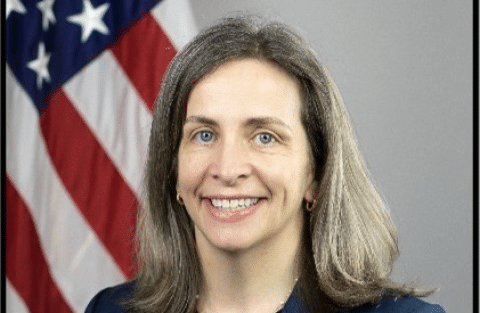
Is Permitting Reform About to Break Through?
Last year, an energy permitting reform bill sponsored by Senators Joe Manchin and John Barrasso passed out of committee but failed to gain full support in the US...
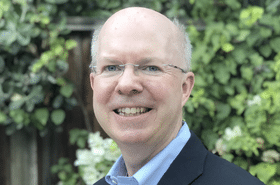
US Energy Policy in a Partisan Era
Following the rollback of key climate provisions from the Inflation Reduction Act, the debate over America's energy future is increasingly contentious. The passage of the One Big Beautiful...

Relevant
Publications
The Potential Contribution of Enhanced Geothermal Systems to Future Power Supply: Roundtable Summary
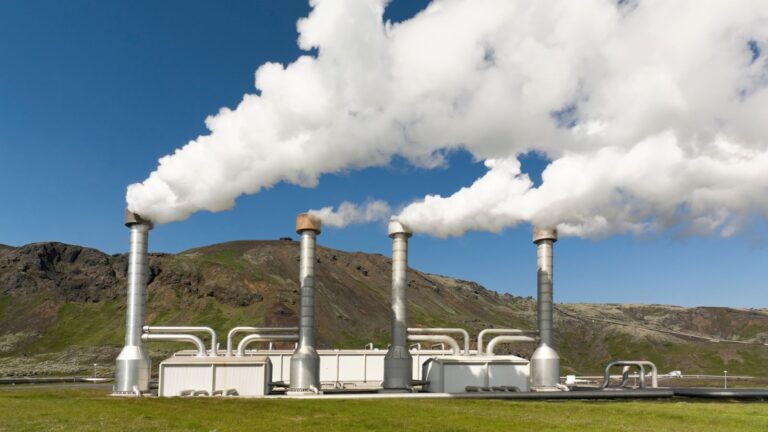
Can AI Transform the Power Sector?
AI’s growing power demand has received enormous attention in recent months. In many places, the lack of power supplies is an important constraint on the growth of data centers to train and run AI models.
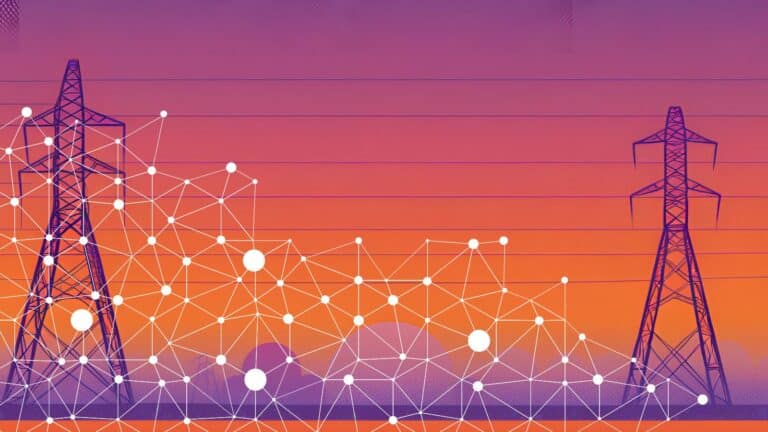
Insights from the US and India for Electricity Open Access in Kenya and South Africa
Kenya and South Africa have recently started moving toward an open access regime in their electricity sectors, while the US and India have been on this path for over two decades.

Addressing Energy Insecurity via Utility Ratemaking
About one in four American households experience some form of energy insecurity. Within this group, Black, Indigenous, Latine, low- and moderate-income (LMI), and other disadvantaged communities face a disproportionately higher burden.
